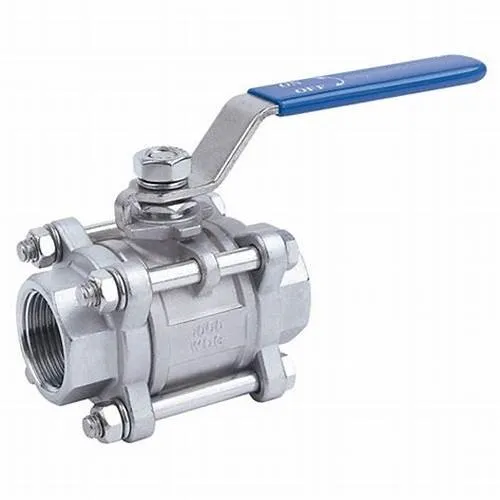Manual Control Valves for Flow Regulation and Management in Piping Systems
Understanding Manual Gate Valves A Comprehensive Guide
Manual gate valves are essential components in various industrial and municipal applications, playing a critical role in the control of fluid flow within pipelines. A gate valve serves as a mechanism to start or stop fluid flow, making it one of the most fundamental types of valves used in systems where flow regulation is necessary.
What is a Manual Gate Valve?
A manual gate valve is a type of valve that features a gate or wedge that is raised or lowered to allow or block fluid passage. It is operated manually, typically using a handwheel or a lever, which raises or lowers the gate inside the valve body. The design allows for minimal flow resistance when the valve is in the fully open position, making it suitable for applications requiring full flow, such as in water supply, sewage treatment, and oil and gas transportation.
Design and Construction
Manual gate valves are characterized by their robust design and construction, usually made of durable materials like cast iron, stainless steel, or bronze. The valve body houses a gate that moves vertically in relation to the flow. When the valve is fully open, the gate is entirely out of the fluid pathway, resulting in a low-pressure drop across the valve compared to other types, such as globe valves.
The construction also includes sealing components, such as packing and gaskets, which ensure a tight seal when the gate is closed. These components are crucial as they prevent leakage, a key concern in pipeline systems where fluid retention is critical for safety and efficiency.
Advantages of Manual Gate Valves
2. Durability Constructed from resilient materials, gate valves are designed for longevity and can withstand harsh operating conditions, which is particularly advantageous in industrial applications.
manual gate valve

3. Simple Operation The manual operation of gate valves makes them easy to use. Operators can quickly stop or start the flow by simply turning the handwheel or lever.
4. Low Maintenance With fewer moving parts compared to other types of valves, manual gate valves typically require less maintenance, translating to reduced operational costs over time.
Limitations
Despite their benefits, manual gate valves also come with limitations. They are not well-suited for throttling or flow regulation since partially opening a gate valve can cause vibrations and damage over time. Additionally, the manual operation may not be practical for systems requiring frequent adjustments, making actuated options more suitable for those scenarios.
Applications
Manual gate valves are widely used in various industries, including
- Water and Wastewater Treatment For isolating sections of pipelines and controlling flow in treatment plants. - Oil and Gas In pipelines to start or stop the flow of crude oil, natural gas, and other hydrocarbons. - Chemical Processing To safely manage the flow of hazardous materials in chemical plants.
Conclusion
In summary, manual gate valves are vital components in many fluid control systems, providing reliable operation and efficient flow capabilities. Understanding their design, function, and applications is crucial for anyone involved in managing industrial processes or infrastructure. As industries continue to evolve, the enduring relevance of manual gate valves underscores their essential role in fluid management technologies.
-
The Key to Fluid Control: Exploring the Advantages of Ball Valves in Industrial SystemsNewsJul.09,2025
-
The Versatile World of 1, 2, and 3 Piece Ball ValvesNewsJul.09,2025
-
Stainless Steel Ball Valves: The Ideal Choice for Efficient Flow ControlNewsJul.09,2025
-
Optimizing Fluid Control with Ball Float ValvesNewsJul.09,2025
-
Manual Gate Valves: Essential for Control and EfficiencyNewsJul.09,2025
-
Everything You Need to Know About Butterfly ValvesNewsJul.09,2025
-
The Versatility of Wafer Type Butterfly ValvesNewsJul.08,2025




